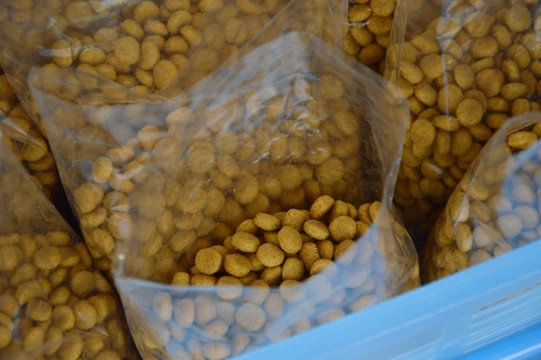
Storing and serving your dog’s food - Seven pitfalls to avoid
Choosing, buying, storing and feeding your dog their regular food is one of the integral routine parts of dog ownership, and while dog owners often spend a significant amount of time deciding on the right choice of food and sourcing the most competitively priced and reliable supplier, how the food is then stored and fed within the home generally garners much less attention!
However, there are a whole range of pitfalls that can occur when it comes to how you store and feed your dog’s meals, small and simple mistakes that can lead to the food becoming contaminated, going stale or otherwise becoming compromised before it even makes it into your dog’s bowl. Every dog owner should spend some time reviewing how they store and prepare their dog’s meals, and in this article, we will look at seven common pitfalls that dog owners often fall into when it comes to these matters. Read on to learn more!
Throwing away the packaging
Many of us buy bags of dry food, and then decant them into a container such as a large Tupperware or other vessel that can be sealed between feedings in order to keep the food fresh, while throwing away the bag itself. However, even if you do decant your dog’s food into another container, it is worth hanging onto the bag that the food came in, as you may need to refer back to the information shown on the bag, such as the expiration date, type of food, and feeding directions.
Leaving bags open or unsealed
For people who feed their dogs directly from the bag that the food came in, this is fine too, and good quality dog food usually comes packaged in such a way to keep the food as fresh as possible after it has been opened, potentially with a foil liner and reseal-able top. You should make use of such features, never leaving the bag unsealed or open after feeding, as exposure to the air can cause the food to go stale and deteriorate much faster than if it is correctly stored.
Salmonella and other bacteria can infect open bags, so try to keep your dog’s food sealed up at all times when not in use.
Buying overly large bags
Like all things, buying dog food is subject to economies of scale; the larger the bag you buy, the less costly this will tend to work out like for like for each meal, when compared to buying smaller bags. However, buying a huge bag of food that it will take your dog a few weeks to finish means that the food will deteriorate and become stale over time from continual opening and closing of the bag, even if you seal the bag up in the meantime.
If you do buy particularly large bags of food, consider dividing it up into smaller sealable containers afterwards, so that each container can be kept closed until it is needed, extending the life of the food.
Storing food in unsuitable conditions
Your dog’s dry food should be treated like the dry goods that you keep in your own cupboards; kept out of direct sunlight, away from strong flavours, and not exposed to extremes of heat or cold. Ensure that your dog food is stored in such a way as to provide the right environment to keep it fresh, and that you do not compromise the food by keeping it in unsuitable places, such as under the sink near to cleaning chemicals, or where it may be exposed to humidity and moisture.
Adding the end of an old bag to the top of the new bag
When you start to get towards the end of one bag of dog food, you may well tip the remainder into the top of the new bag for convenience, but you should avoid doing this too. Older food that is on the verge of going stale can contaminate the new bag, and any bacteria and other contaminants that were present in the old food will then infiltrate your brand new bag too.
Keeping wet food in open tins in the fridge
If your dog does not eat a whole tin of food in one meal, the chances are that you put the remainder of the tin in the fridge for next time. However, open tins should not be kept in the fridge, and if you need to keep wet food after opening, you should transfer it into a non-metallic container for storage. Also, allow the food to return to room temperature before you feed it to your dog.
Poor hygiene protocols
Most of us wash our hands before we sit down for a meal and of course, would never consider eating from dirty plates, and yet often we do not extend these same courtesies to our dogs!
Your dog’s food bowls should be washed after every meal, with clean bowls used each time, and it is also a good idea to wash your hands before (and after) you feed your dog, to prevent dirt and contaminants on your hands from transferring to the food.



